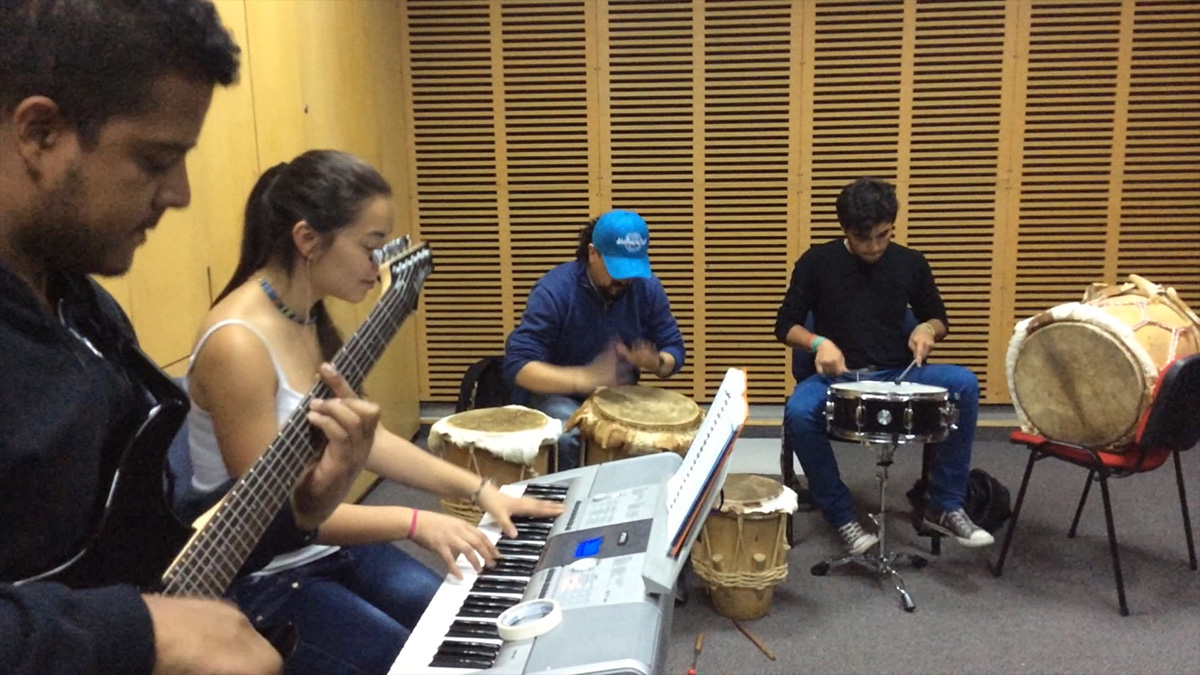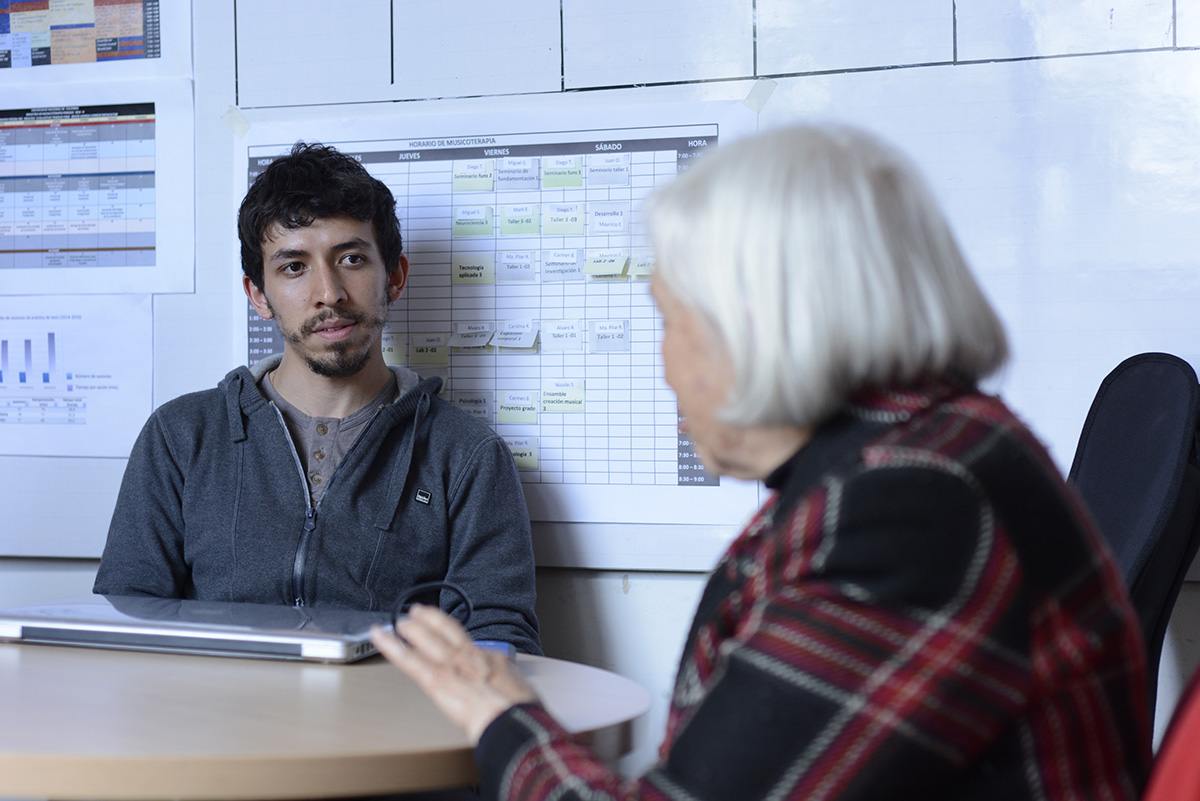The program designed to be a vehicle to help their inner expression, emphasizes on sociological aspects which enable people to observe themselves and in regards to other people of the community in a project which considers cultural aspects.
Universidad Nacional de Colombia (UNal) master"s program Professor Carmen Barbosa says that communicating their anguish and stress with music leads people to an awareness process which is gradually carried out and contributes to their general welfare.
"Communitarian music therapy emerges as a link to diverse social issues with the purpose of discovering the best way to contribute to solve conflicts and other issues approached from the clinical perspective as disease does not necessarily have to exists," said Nicolás Soto, M.Sc. in Music Therapy.
One of the purposes of the program is that after the sessions (approximately 25) individuals begin to relate in another manner to people part of the environment, which does not make distinctions between victims and victimizers, friends or foes.
Music therapy sessions are carried out at a location common to all making it difficult to surmise who was part of what group in the past.
The Ciudadela Educativa de Bosa (Bosa Educational Citadel) has more than 8,000 students including children from displaced people or inclusively reinserted people randomly chosen, so afterward it is possible to observe them playing music together, leaving behind their differences. By using rhythm, body movement and songs the participants weave a new form of relating which later materializes in a musical composition.
"In this context, there is still a very important word which is musicar, which would be equivalent to dancing, which is an experience which emerges from a creative improvisation context," said Jose Antonio Urrea, also a M.Sc. in Music Therapy.
It is not only about singing said Barbosa, as behind this there is a whole psychological and scientific method and strategy, some of which components were evidenced in an experience of similar characteristics which happened during the "Peace Camps" located in Bogotá"s main plaza known as the "Plaza de Bolívar" which one day provided voice to the community through music.
"During this process, they carried out different processes and experiences related to expression through voice, instruments and body movements leading to a natural collective creation, which is only produced through careful and detailed therapeutic objectives," said Soto.
As everyone is different, this is not about handing out preconceived formulas in a booklet; by working in the field music therapists need to consider the individualities with the purpose of identifying and determining other issues which they hope to solve during the sessions or immediately.
The musical therapist needs to be very creative, have a good observation capability and communicational management through artistic expression as he/she needs to recognize all the aspects which emerge during the process to establish a real relationship between art, science, and therapy from what people express through music, so they can use these resources without the presence of the therapist.
 Correo Electrónico
Correo Electrónico
 DNINFOA - SIA
DNINFOA - SIA
 Bibliotecas
Bibliotecas
 Convocatorias
Convocatorias
 Identidad UNAL
Identidad UNAL







